An Endless Pile of Bison Skulls

In 1892, a powerful photograph taken in Rogueville, Michigan, depicts an overwhelming sight: thousands of bison skulls piled high at the Michigan Carbon Works. These skulls, collected after the mass killing of bison, were used in various industrial products such as glue, dye, ink, fertilizer, and bone char, which played a crucial role in sugar refining. The massive depletion of bison had a severe impact on the ecosystem, as well as the Native American tribes who depended on these animals for sustenance. This image highlights the destructive consequences of industrialization on the natural world and cultural communities during the Wild West era.
A Photo of Buffalo Bill – The Legend
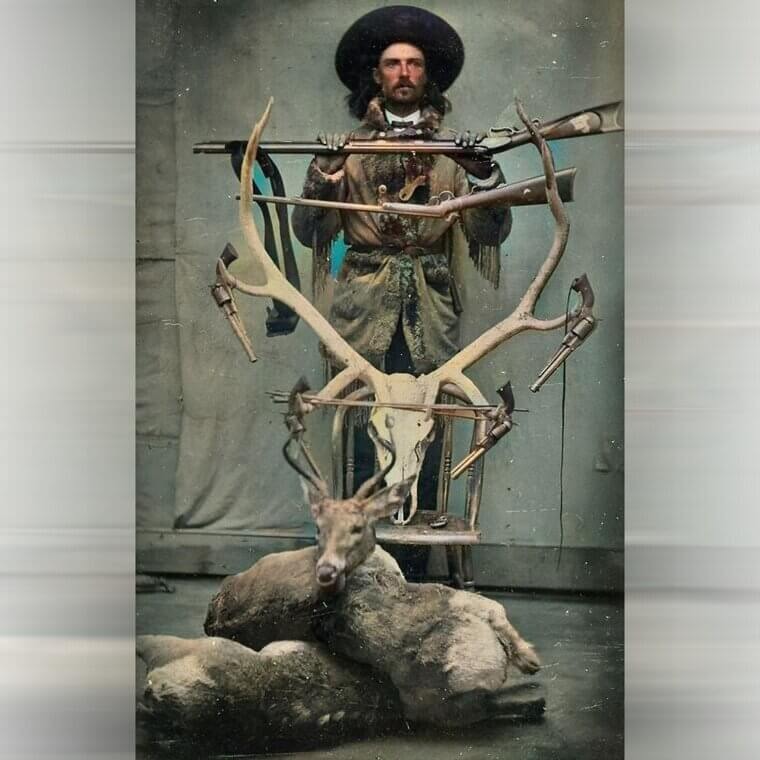
William Cody, famously known as Buffalo Bill, became an iconic figure of the American Wild West. Known for his extraordinary hunting skills, Buffalo Bill killed nearly 5,000 bison in a mere 18 months during the 1860s. His fame as a frontiersman and hunter led to the creation of Buffalo Bill’s Wild West Show in 1883, which dramatized the lifestyle of the frontier and captivated audiences across the country. His show played a pivotal role in shaping the way the public viewed the Wild West, blending history with entertainment. Buffalo Bill’s life and work left an enduring legacy, immortalizing the adventurous, often dangerous, spirit of the American West.
The Famous Annie Oakley Shooting Backwards
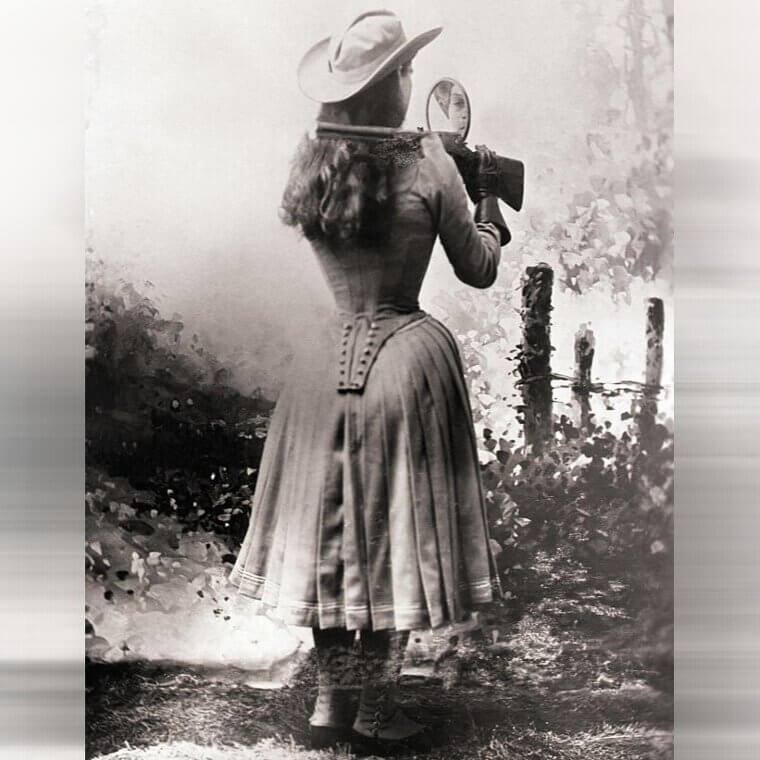
Annie Oakley was a legendary sharpshooter whose talents earned her worldwide fame. In this historic photo, Oakley is seen performing a trick shot, using a pocket mirror to aim her rifle behind her. A skilled marksman from childhood, Oakley became the star attraction in Buffalo Bill’s Wild West show, where her shooting feats captivated audiences. Her remarkable abilities also challenged gender norms, making her an influential figure in both the Wild West and women’s history. Oakley’s contributions to both entertainment and the empowerment of women continue to be celebrated today.
They Called Them “Disreputable” Places

In the early 1900s, Hazen, Nevada, became known for its saloons and “disreputable” establishments that catered to workers involved in a nearby irrigation project. Despite its small size, Hazen gained notoriety for frequent hangings, showcasing the lawlessness and rough nature of many Wild West towns. While these venues played an economic role by offering places for workers to unwind, they also underscored the chaotic and often dangerous environment of the frontier. Hazen’s history reflects the less glamorous, but equally important, side of frontier life in the American West.
The Grim Reality of Frontier Justice
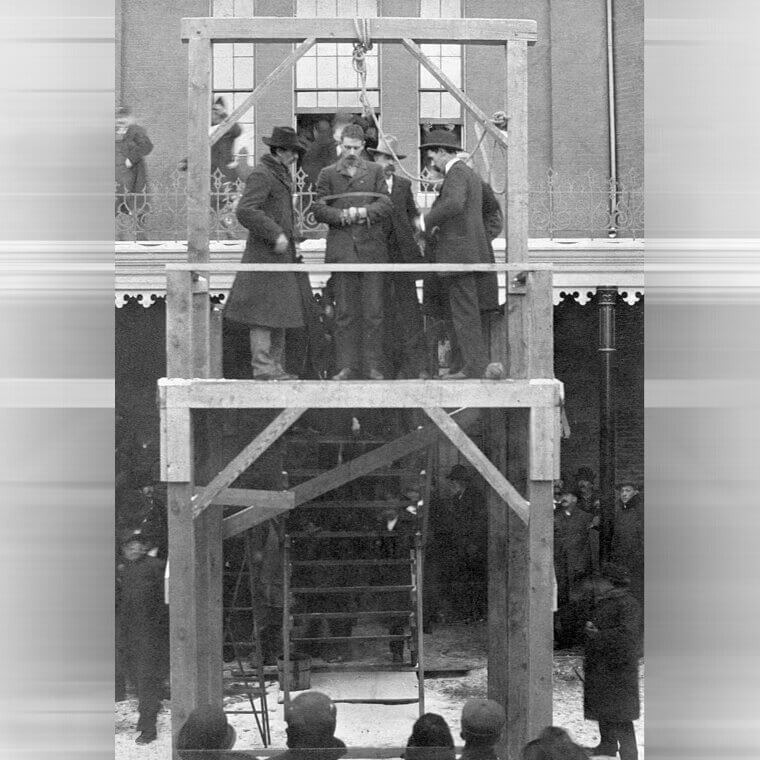
This haunting image captures the stark reality of public executions, a grim form of justice during the Wild West era. Executions often served as public spectacles, with large crowds gathering to witness the swift and unforgiving nature of frontier law. The lawlessness and the harshness of the time meant that justice was meted out quickly, and sometimes cruelly. Behind the myths of adventure and excitement lies the somber truth of the Wild West, where survival and law enforcement were often a matter of life or death.
Child Labor in the Mines
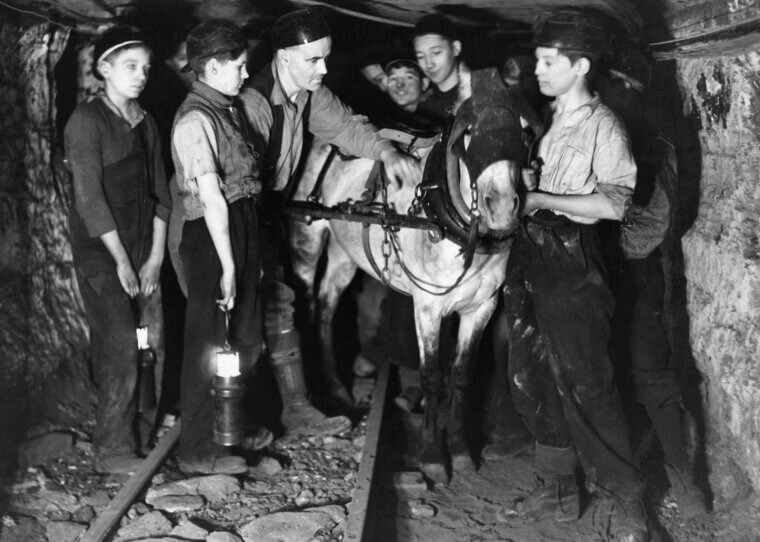
The Wild West was not all open skies and horseback riding; many children worked in the dark, dangerous conditions of underground mines. These young boys were tasked with guiding mules through tight tunnels, a physically demanding and hazardous job. The reality of child labor in mining operations contrasts sharply with the romanticized images of cowboys and frontiersmen. The difficult and sometimes perilous work of these children is a reminder of the hardships faced by many during the era of westward expansion.
A Group of Men Playing Faro in a Western Saloon
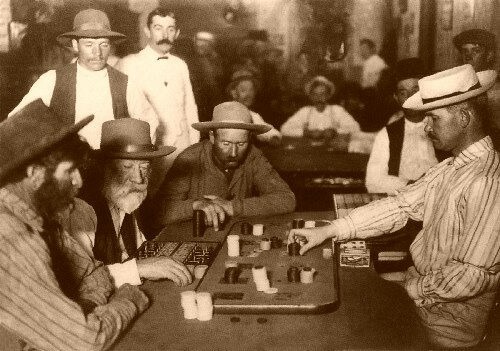
In 1895, men are seen enjoying a game of Faro in a Western saloon. Faro, a popular gambling game during the Gold Rush, was a common pastime in saloons across the West until around 1915. Known for its simplicity and excitement, Faro was a central part of the social fabric of Wild West saloons. The image of men absorbed in the game reflects the risk-taking spirit of the time, as well as the high-stakes nature of frontier life, where fortunes could change in the blink of an eye.
The Difficulties of Crossing the Gila River
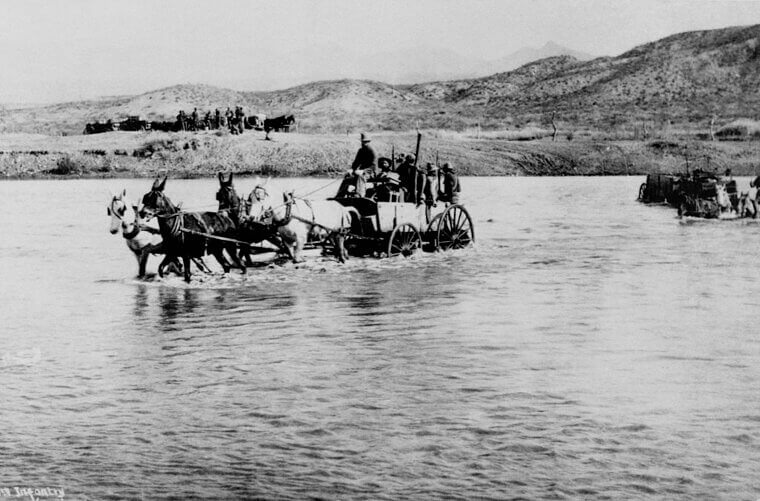
The Gila River, an important tributary in the southwestern United States, posed significant challenges for settlers in the Wild West. This 1885 photograph captures a cowboy crossing the river in San Carlos, Arizona. The unpredictable waters of the Gila River and the surrounding rugged terrain made navigation a constant struggle for travelers. This image underscores the harshness of frontier life, where overcoming natural obstacles was a daily test of endurance and resourcefulness for those trying to settle the West.
What Entailed Settling a New Town
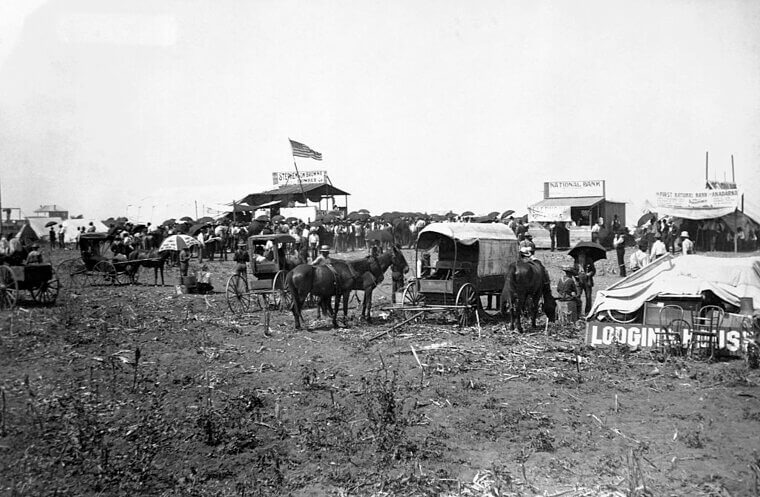
Anadarko, Oklahoma, in 1901, was emerging as a pivotal town for Native American tribes, including the Delaware Nation and the Wichita and Affiliated Tribes. The town became known as the “Indian Capital of the Nation” and witnessed the complex relationships between Native American communities and European settlers. The establishment of towns like Anadarko illustrates both the challenges and cooperation between different cultural groups during westward expansion. The early days of this town reflect the difficult but vital task of settling and building new communities in the American West.
The Difficulties of Getting Water in the Wild West
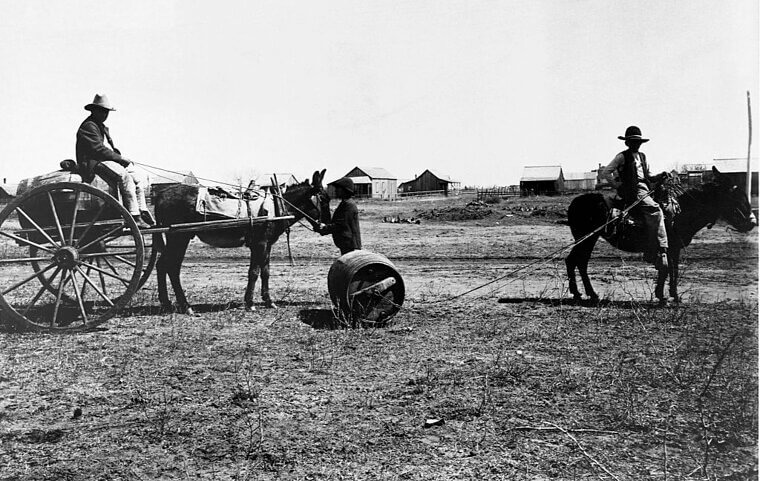
This photograph from 1905 showcases the challenging task of hauling water in the arid Texas landscape. With few natural water sources, settlers relied on wells and transported water using horse-drawn wagons. In the harsh conditions of the Wild West, securing water was no easy feat. The image highlights the ingenuity and resilience required to survive in such a challenging environment, where basic resources like water often demanded great effort and planning. It’s a testament to the determination of the settlers who called the West home.

Leave a Reply